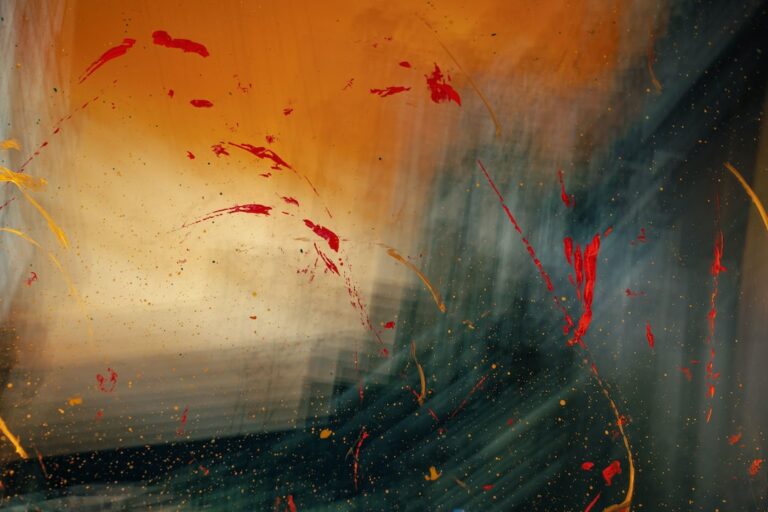
How would it feel to be able to see through someone else’s eyes. Would the colors look the same? It would be different depending on where we look. Although we see the same things, the way we see them changes. Seeing also triggers a multidimensional field of thought; it is perceived as a whole where the mind looks at memories, dreams, emotions, and sometimes bizarre déjà vu moments from the past. This is what art therapy does, however.
Looking and seeing… When I think about these, the first One thing that springs to mind is the thousands of photos taken of the same landscape by different people You will see different details in each photograph. Photographs in which the sun’s light is at the center. Sometimes people’s faces are visible. Photographs are also taken to record reality. Reflect our perception.
Picture: Using various paints and techniques it seems to add images and color to the areas we see and look at. What happens when we escape and allow our imagination to take over? While the three-dimensional landscape looks two-dimensional from the concrete world, it actually encompasses many other dimensions. The hands can be used to create a picture that goes beyond the photo.
To broaden our experience of looking and being seen with Art therapyThis will allow us to explore small practices we may be able to try. For a new understanding of looking and seeing, you can try paints and painting materials during a small break during the day, against a landscape that is always a part of your life, or in front of a landscape that always gives you pleasure… When we realize the reflections of these new practices in our world of perception, We can explore how the feelings and emotions brought on by it may differ from our previous experiences.
“A journey of discovery does not mean reaching new lands. But it is seeing the old with new eyes.” Marcel Proust (Prisoner – In Search of Lost Time, 1923)*
The projection of your gaze
Our eyes can be opened whenever we see something. If we close our eyes, we may not even notice that there is a place we gaze at. What if we looked conscious? When you close your eyes, what does your watch’s focus be when you open them again? Do you find it is more mobile or fixed? Take a deep breath and take in the surroundings. Take a deep breath and allow these moments to inspire you to be calm.Is the speed of the gaze also slowing down? You can give yourself some time to slow down and play the game of following your look as much as you want…
Take a look at the seen
When we follow our gaze with conscious awareness, it is possible to focus on what we see. What’s more, our brain fills in the blanks in our sight. This shows how little information we receive and how much information is provided by the brain as we examine the world. The individual experience’s richness is mainly illusionary. We only see a few and rely on our educated guesses to fill in the gaps. And so, even though our perceptions may not always be accurate, they do reflect our reality. Our reality could be our memories, thoughts, imaginations, and experiences. We may be able to notice changes in the reality we have constructed with awareness every time we look at it. You can paint your visual perception diary to help you understand how you make sense of the things we see.
Visual perception diary
We can paint the landscapes we see on different days and with different emotions. A therapeutic practice that seeks to heal any reflections on the paper when our hands meet with the paint.It is possible to do so without any aesthetic considerations. It is also possible to take notes about the times of the day, the emotions we feel, and the subjects that are most important to us. When we see the same landscape from both our inner and outer worlds, we can look at these photos and take notes.”, “What emotions could we have used other colors for?”, “What details are most prominent in each painting?””, “Did you notice any details we hadn’t noticed before?”, “We can trace our thoughts back to that day in color. Or, can we see it as shapes? Focus on the questions. With the answers to these questions, we can learn more about ourselves through photos, notice details we don’t see, and reflect on the. These are the effects of this practice. Perhaps the most important aspect of this practice is that it can only be done while we are practicing it.